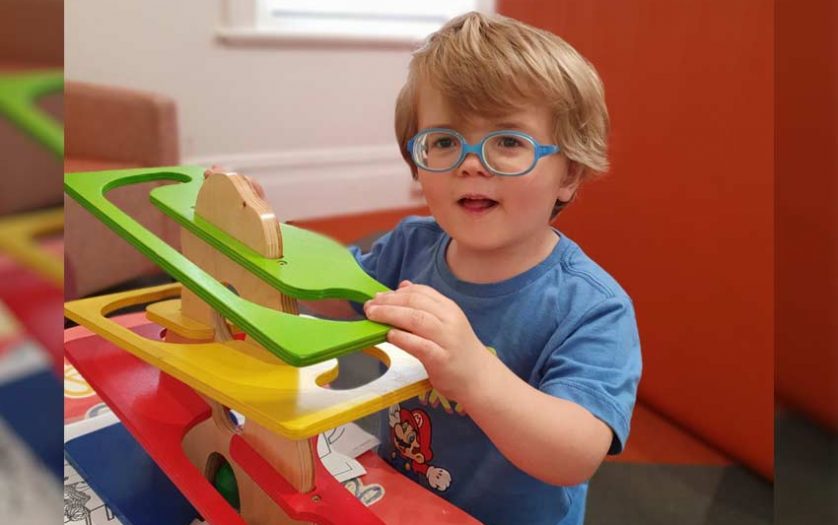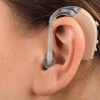Max’s cochlear journey has just begun

Cochlear implants can allow people who are deaf to receive and process sounds and speech. However, these devices do not restore typical hearing. They are tools that allow sound and speech to be processed and sent to the brain.
For young Max, the real star in the Can:Do Hearing 2023 Hearing Awareness Week TV Campaign starting this weekend, cochlear implants are one of the options on his horizon which parents, Anna and Gideon, will discuss with their ENT, Hearing Australia and Can:Do 4Kids when the time is right.
For now, mum Anna says, “Max is happy with his ‘orange and blue’ hearing aids, which he picked himself.”
His hearing loss was obvious from birth as Max has “Sticklers Syndrome”. Stickler syndrome is a group of hereditary conditions characterised by a distinctive facial appearance, eye abnormalities, hearing loss, and joint problems.
As an active 3 year old, who loves riding his bike and drawing, his gradual hearing deterioration hasn’t stopped him yet and with his hearing aids, and eventually with the cochlear implants, he will continue to grow, develop and thrive.
Hearing aids help many people, including Max, however as hearing loss progresses, a cochlear implant may provide clarity and a better volume for a person to understand speech again.
On the 25th of February 2023, people from all around the world, come together to celebrate the life-changing impacts cochlear implants have.
So, just what are cochlear implants?
A cochlear implant is a device that bypassed damaged sensory hair cells within the cochlea (inner ear) to directly stimulate auditory nerves. It consists of two parts – the external sound processor which collects and processes the sound, converting it into a radio frequency signal that is sent through the skin, and, the internal implant which consists of the receiver-stimulator and electrode, which is inserted into the cochlea and provides electrical stimulation to the auditory nerve directly. This takes the sound to the brain.
4 differences between a hearing aid and a cochlear implant
Hearing aids and cochlear implants improve hearing for people diagnosed with sensorineural hearing loss when there is damage to the hair cells in the inner ear or the nerve pathways from the inner ear to the brain.
A cochlear implant is surgically implanted by an ENT surgeon versus hearing aids fitted by a qualified audiologist. Hearing aids are completely removable versus cochlear implants, where you can only remove the external processor but not the implant. Hearing aids amplify sounds versus cochlear implants, which stimulate the auditory nerve to provide sound sensation. Cochlear implants use electrical signals versus acoustic signals with hearing aids.
Featured Stories
-
 I finally got hearing aids at age 26, after a lifetime of feeling stigmatized
I finally got hearing aids at age 26, after a lifetime of feeling stigmatized
-
 Preparing for the parenting life when you have a disability
Preparing for the parenting life when you have a disability
-
 4 fun cities to visit on your self-care reset trip
4 fun cities to visit on your self-care reset trip
-
 How to manage an ADHD diagnosis
How to manage an ADHD diagnosis
-
 Is the United States facing a shortage of nursing homes for people with disabilities?
Is the United States facing a shortage of nursing homes for people with disabilities?

